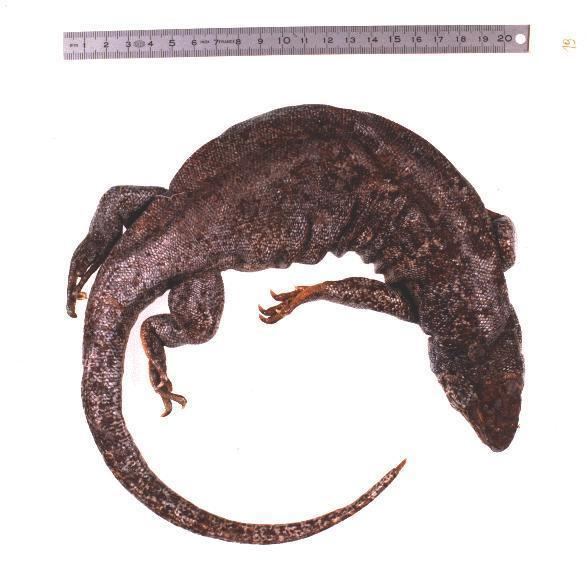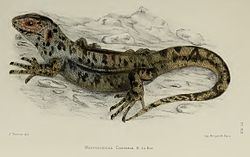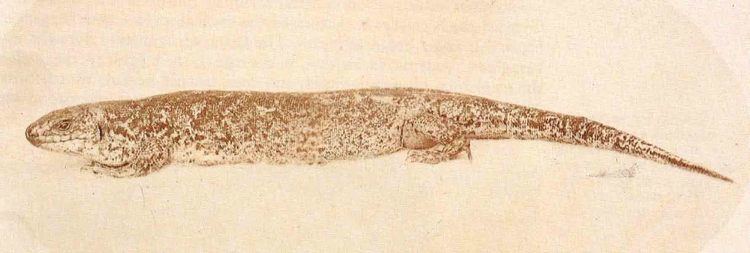Kingdom Animalia Class Reptilia Infraorder Scincomorpha Phylum Chordata Order Scaled reptiles | Subphylum Vertebrata Suborder Sauria or
Lacertilia Family Scincidae Rank Species | |
 | ||
Similar Chioninia, Mauritian giant skink, Leptosiaphos, Gongylomorphus | ||
Macroscincus coctei, also called the Cape Verde giant skink, lagarto, or Cocteau's skink, is a species of lizard, a reptile that was at one time known to inhabit the islets of Branco and Raso in the Cape Verde islands of the Atlantic Ocean, rendered deserts by human-caused habitat destruction. No Macroscincus coctei has been observed since early in the 20th century.
Contents
Taxonomy
The specific name, coctei, is in honor of French physician and zoologist Jean Théodore Cocteau (1798-1838).

It has been found through mitochrondrial DNA sequences that M. coctei was most closely related to the skink genus Mabuya.
Description

M. coctei was very large for a skink. Adults could attain a snout to vent length (SVL) of 32 cm (13 in), and the cylindrical tail was as long as the head and body.
Behaviour and ecology

Macroscincus was largely herbivorous, but whether out of necessity with deteriorating conditions or from opportunistic advantage, occasionally became more carnivorous as individuals would occasionally eat the young from nesting shore birds. German herpetologists had noted Macroscincus consuming birds in captivity in the early 20th century.
One interesting aspect of this species is that it possessed a transparent lower eyelid; possibly to spot predators from below.
From the examination of preserved specimens, it appears that this species had a "belly button" slit, indicating viviparism. However, there are also reports that indicate this species was an egg layer.
Macroscincus is considered unique among the Scincidae in having tooth crowns which are labiolingually compressed and multicuspate.
M. coctei had a SENI value of 0.13. As such, it was a partially arboreal skink that was borderline enough to adapt to the semi-desert like conditions created when the Cape Verde islands were denuded by humans and domesticated animals centuries ago.
Extinction
Causes cited for their decline include over hunting for food and use for "skink oil" by natives of neighboring islands and prolonged drought. At one time, starving convicts were marooned in the Cape Verde archipelago and ate the extant population of Macroscincus coctei. An explorer, Leonardo Fea, brought back several specimens which are now housed in Italy. This constitutes the extant specimens of Macroscincus coctei. Subsequent explorers such as Sheliech, Andreone, and Pather, have failed to find living Macroscincus. In the early 20th century, German herpetologists tried to captive-breed this species to no avail.
In the 2013.1 version of the IUCN Red List, the IUCN declared the Macroscincus officially extinct.
